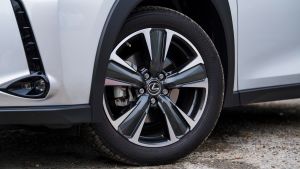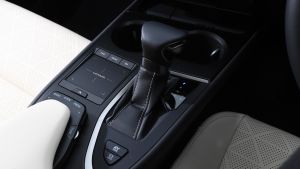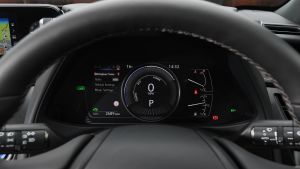A
Auto Express
Guest
Based on our experience, the Lexus UX is a compelling alternative to the best compact SUVs you can buy. The styling is daring and different, the interior is finished to the usual Lexus high standards, and it’s packed with an impressive array of safety equipment.
There are three drivetrains available in the UK. The first, which has been around the longest, is Lexus and Toyota’s venerable 2.0-litre petrol-electric hybrid system that sends power to the front wheels. These models are badged as “250h”. The second is also a petrol-electric hybrid but is four-wheel-drive and gets “E-Four” added to the end of its name. Last but not least is the fully-electric “300 e” which arrived towards the end of 2020.
While each version has its own strengths, the weaknesses are common. For example, the infotainment system is too fiddly and boot space is down on rivals – although as part of updates to the UX in 2020 the former was improved somewhat.
Lexus practically invented the premium crossover when it launched the RX in 1998, but the luxury brand was a little late to the compact SUV party and slow to get an all-electric model to market. Even so, Lexus launched its NX back in 2014, the UX three years later and three years after that production of its first-ever all-electric car (the UX 300 e) finally started.
The UX goes head-to-head with the likes of the Mercedes GLA, BMW X1, Audi Q3 and Volvo XC40, but with a coupe-like profile and sporty driving characteristics, it’s closest rival is arguably the BMW X2.
It’s based on an adaptation of Toyota’s TNGA platform (called GA-C in Lexus speak), which means it shares its underpinnings with the Toyota Prius and Toyota C-HR. Thanks to the high-voltage electronics assisting the petrol engine, all UX models promise good fuel consumption and low tailpipe emissions.

Lexus UX

Lexus UX

Lexus UX

Lexus UX

Lexus UX

Lexus UX

Lexus UX

Lexus UX

Lexus UX

Lexus UX

Lexus UX

Lexus UX

Lexus UX
The UX will reward keen drivers with tight body control, plenty of grip, sharp steering and a composed ride. Even the standard-fit CVT transmission feels smooth and linear in the UX. In typical Lexus fashion, the level of standard specification is high, including a comprehensive array of active and passive safety devices. There are three grades (aka trim levels) to choose from: UX, F Sport and Takumi, plus a number of optional extra packs. Prices start from around £30,000, but rise to £53,000 for the flagship battery-powered model.
It’s not cheap, then, but thanks to its bold styling, smart interior and impressive level of kit, the Lexus UX promises to make quite an entrance. Read on to discover our thoughts on the UX.
Continue reading...
There are three drivetrains available in the UK. The first, which has been around the longest, is Lexus and Toyota’s venerable 2.0-litre petrol-electric hybrid system that sends power to the front wheels. These models are badged as “250h”. The second is also a petrol-electric hybrid but is four-wheel-drive and gets “E-Four” added to the end of its name. Last but not least is the fully-electric “300 e” which arrived towards the end of 2020.
While each version has its own strengths, the weaknesses are common. For example, the infotainment system is too fiddly and boot space is down on rivals – although as part of updates to the UX in 2020 the former was improved somewhat.
About the Lexus UX
Lexus practically invented the premium crossover when it launched the RX in 1998, but the luxury brand was a little late to the compact SUV party and slow to get an all-electric model to market. Even so, Lexus launched its NX back in 2014, the UX three years later and three years after that production of its first-ever all-electric car (the UX 300 e) finally started.
- SEE MORE Best small 4x4s to buy 2021
The UX goes head-to-head with the likes of the Mercedes GLA, BMW X1, Audi Q3 and Volvo XC40, but with a coupe-like profile and sporty driving characteristics, it’s closest rival is arguably the BMW X2.
It’s based on an adaptation of Toyota’s TNGA platform (called GA-C in Lexus speak), which means it shares its underpinnings with the Toyota Prius and Toyota C-HR. Thanks to the high-voltage electronics assisting the petrol engine, all UX models promise good fuel consumption and low tailpipe emissions.

Lexus UX

Lexus UX

Lexus UX

Lexus UX

Lexus UX

Lexus UX

Lexus UX

Lexus UX

Lexus UX

Lexus UX

Lexus UX

Lexus UX

Lexus UX
The UX will reward keen drivers with tight body control, plenty of grip, sharp steering and a composed ride. Even the standard-fit CVT transmission feels smooth and linear in the UX. In typical Lexus fashion, the level of standard specification is high, including a comprehensive array of active and passive safety devices. There are three grades (aka trim levels) to choose from: UX, F Sport and Takumi, plus a number of optional extra packs. Prices start from around £30,000, but rise to £53,000 for the flagship battery-powered model.
It’s not cheap, then, but thanks to its bold styling, smart interior and impressive level of kit, the Lexus UX promises to make quite an entrance. Read on to discover our thoughts on the UX.
Continue reading...
